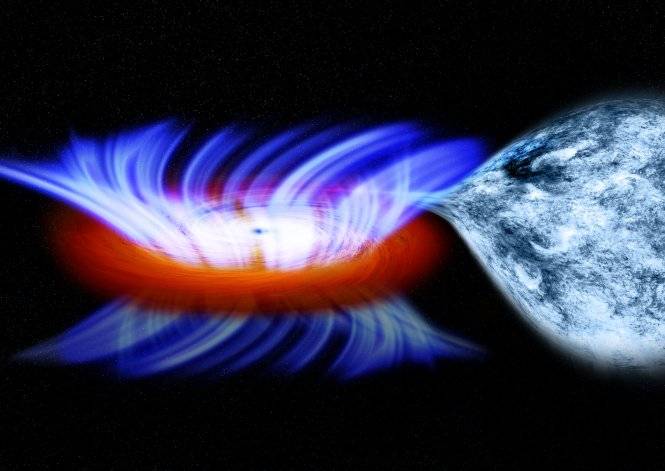
This artist’s impression shows a binary system containing a stellar-mass black hole called IGR J17091-3624, or IGR J17091 for short. The strong gravity of the black hole, on the left, is pulling gas away from a companion star on the right. This gas forms a disk of hot gas around the black hole, and the wind is driven off this disk.New observations with NASA’s Chandra X-ray Observatory have clocked the fastest wind ever seen blowing off a disk around this stellar-mass black hole. Stellar-mass black holes are born when extremely massive stars collapse and typically weigh between five and 10 times the mass of the Sun.
The record-breaking wind is moving about twenty million miles per hour, or about three percent the speed of light. This is nearly ten times faster than had ever been seen from a stellar-mass black hole, and matches some of the fastest winds generated by supermassive black holes, objects millions or billions of times more massive.
Another unanticipated finding is that the wind, which comes from a disk of gas surrounding the black hole, may be carrying away much more material than the black hole is capturing.
The high speed for the wind was estimated from a spectrum made by Chandra in 2011. A spectrum shows how intense the X-rays are at different energies. Ions emit and absorb distinct features in spectra, which allow scientists to monitor them and their behavior. A Chandra spectrum of iron ions made two months earlier showed no evidence of the high-speed wind, meaning the wind likely turns on and off over time.
Credits: Illustration: NASA/CXC/M.Weiss› Read more/access all images

























